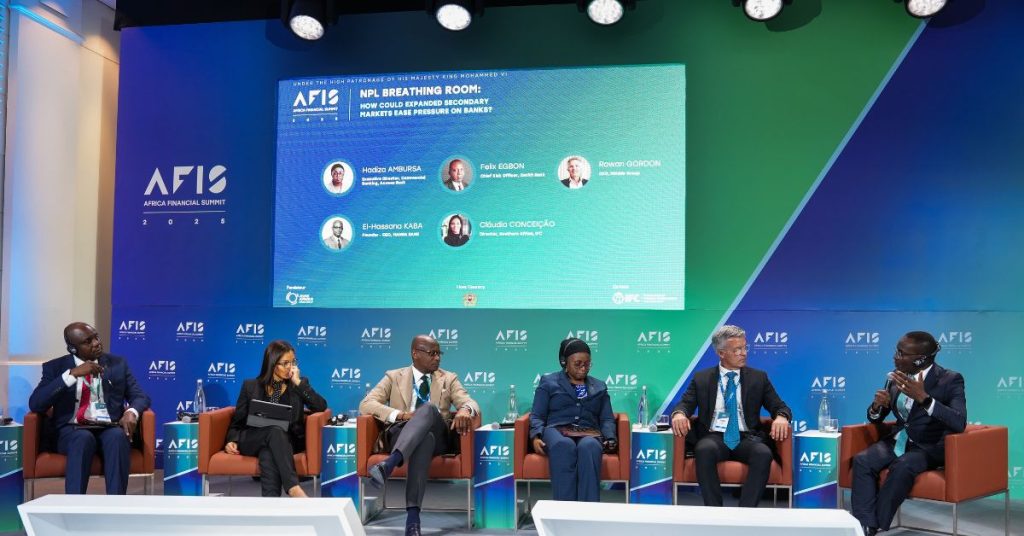It is my second time in Morocco this year, and each visit has reinforced one thing: this country knows how to host big conversations. In April, I was in Marrakech for GITEX Africa, where the continent’s tech ambitions were centre stage. I’m currently in Casablanca for the Africa Financial Summit (AFIS), where the conversations have shifted from code to capital.
If Marrakech was about ideas and innovation, Casablanca is about capital and control. The two-day summit, hosted by Jeune Afrique Media Group, in partnership with the International Finance Corporation (IFC) and the Kingdom of Morocco, has drawn more than 1,200 ministers, central banks, financiers, and innovators to debate one defining question: how can Africa fund its own future?
This year’s theme, “Unlocking Africa’s Financial Power: Time to Channel Domestic Capital for the Future,” is urgent. Global capital is tightening, interest rates remain high, and investors are more cautious. Yet, beneath that pressure lies an opportunity to mobilise the trillions already sitting in African banks, pension funds, and insurance pools to drive local development.
“Africa is not short of capital: it lies in our banks, our markets, our insurance funds, and even in our phones,” Amir Ben Yahmed, President of AFIS, said at the opening ceremony on Monday, Nov. 3. “What it still lacks is ambitious regulation and solid bridges to channel this capital towards development.”
A shift toward financial sovereignty
The discussions have so far centred on a clear idea: Africa’s economic sovereignty depends on its financial sovereignty. As IFC Managing Director Makhtar Diop noted, “Mobilising all our resources—African savings, regional markets, global capital—is the key to sustainable growth. Success depends on us all.”
Africa’s institutional investors hold more than $2.1 trillion in assets across pension funds, insurance, and sovereign wealth, yet less than 10% of that capital is deployed within Africa’s own borders, according to the African Development Bank (AfDB).
“Financial sovereignty is not a slogan; it is an imperative, a collective duty, a handover between African generations,” Morocco’s Minister of Economy and Finance, Nadia Fettah, said at the opening ceremony. “These words commit us (…) Africa does not seek to isolate itself from the world. It wishes neither to build walls nor cut itself off from exchanges, but to reclaim control over its economic destiny.”
Africa’s infrastructure and industrialisation gap exceeds $100 billion annually, according to AfDB. With foreign funding harder to come by, African markets are being forced—perhaps for the first time—to build their own capital engines. And that, ultimately, is what AFIS hopes to achieve.
Beyond the conversations, deals were penned on the sidelines. On Monday, Ecobank Group, one of Africa’s largest banking groups, and Proparco, a subsidiary of the French Development Agency (AFD) Group, signed a €10 million ($10.7 million) Trade Finance Guarantee Facility for Ecobank Chad, extending a programme launched in 2018 that has now mobilised €125 million ($144 million) across seven African countries.
The deal will help finance imports of raw materials essential for manufacturing and agriculture in Chad, goods that the local market cannot always supply. It is also part of the AFD Group-run Choose Africa programme, which provides financing solutions to small African businesses, including startups, micro-enterprises and micro, small, and medium enterprises (MSMEs).
Proparco’s Deputy CEO, Djalal Khimdjee, said integrating Ecobank Chad into the programme “will enable local businesses to import raw materials and become part of the international value chain.”
It’s the kind of cross-border, public-private model that could help scale Africa’s self-financing ambitions, small steps that, collectively, shift how liquidity moves across the continent.
Inside the NPL discussion: cleaning up African balance sheets
Of the almost 17 sessions on day one, I only managed to attend one (thanks to flight delays), but it was a crucial one: “NPL breathing room: How could expanded secondary markets ease pressure on banks?”
Sitting among investors and bankers, I listened as speakers unpacked Africa’s non-performing loan (NPL) dilemma. In Kenya and the Central African Economic and Monetary Community (CEMAC) region, roughly 16% of loans are non-performing. In the West African Economic and Monetary Union (WAEMU) zone, it’s around 9%. Those numbers choke credit growth and limit banks’ ability to lend to the real economy.
The IFC’s Director, Southern Africa, Cláudia Conceição, crystallised the core issue: “This is not about clearing balance sheets of the bank. This is actually about bringing that capital that is stuck in the balance sheets of the banks to finance the economy.”
Data quality emerged as a critical bottleneck. “Data quality is key. It’s one of the enablers for success,” Conceição emphasised, highlighting the fundamental challenge of reliable information in creating functional secondary markets.

Regulatory fragmentation presents another significant obstacle. Hadiza Ambursa, Executive Director, Commercial Banking at Access Bank, noted, “There’s also a lack of understanding and awareness of these kinds of things, a bit too innovative for the capital market at the stage we are in currently.”
One provocative perspective came from Rowan Gordon of Nimble Group, a financial services company providing credit and capital solutions, who described their approach as “a private sector debt forgiveness engine,” revealing that they often purchase distressed debt at pennies on the dollar, with 70% potentially being written off to support economic recovery.
Felix Egbon, Chief Risk Officer at Zenith Bank, summarised the collective sentiment: “The benefits of capital recycling through the secondary market cannot be overemphasised.” The implied message was clear: if African banks can build efficient secondary markets for bad loans, they can recycle risk and unlock billions for new lending.
If anything, the real work starts in the days after the summit. The challenge is whether policymakers, investors, and operators will translate the talk into building systems that change who gets funded on the continent, and how quickly. Because imagining the future is one thing, financing it, with all the friction and follow-through it demands, is something else entirely.









